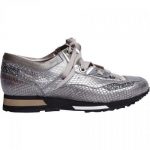Sneakers, also known as athletic shoes, trainers, or kicks, have evolved from humble beginnings into an iconic and diverse category of footwear. What began as practical and utilitarian footwear for athletes has transformed into a multi-billion-dollar industry that marries cutting-edge technology with fashion-forward design. In this extensive article, we delve deep into the world of sneakers, exploring their history, design elements, and the technological innovations that have revolutionized the industry, with a particular focus on the transition from basketball to running shoes.
The History of Sneakers
The term “sneakers” itself is a testament to their function. Sneakers were initially designed to be noiseless, allowing wearers to move quietly or “sneak” around. Their history can be traced back to the 18th century when rubber-soled shoes were created for specific purposes.
Early Beginnings: Rubber-Soled Shoes
- The first rubber-soled shoes appeared in the late 18th century. These early versions had simple canvas uppers and vulcanized rubber soles.
- The Plimsoll, a popular rubber-soled shoe of the 19th century, featured a canvas upper and a rubber sole with horizontal lines, making them resemble plimsolls.
The Converse Chuck Taylor All-Star
- In 1917, the Converse Rubber Shoe Company introduced the iconic Chuck Taylor All-Star. These high-top sneakers, named after the famous basketball player Chuck Taylor, became synonymous with basketball culture.
- The Chuck Taylor All-Star featured a canvas upper, rubber toe cap, and a high-top design to provide ankle support. It was one of the first sneakers to embrace both function and style.
Running Shoes Take Their First Steps
- The 1960s saw the emergence of running as a popular recreational activity. To meet the needs of runners, companies like Nike and New Balance began developing specialized running shoes.
- In 1964, Bill Bowerman, co-founder of Nike, created a prototype running shoe called the Tiger, which evolved into the legendary Nike Cortez.
Design Elements of Sneakers
Sneaker design is a fascinating blend of form and function. Various elements contribute to the aesthetics and performance of sneakers. Here are some key design features:
1. Upper Materials
- Sneaker uppers can be crafted from a wide range of materials, including leather, canvas, mesh, synthetic fabrics, and even knit materials. Each material offers unique benefits in terms of breathability, flexibility, and durability.
2. Midsoles and Cushioning
- The midsole is a critical component of sneaker design, providing cushioning and support. It’s often made of materials like EVA (ethylene-vinyl acetate) foam, PU (polyurethane), or newer innovations like Boost and React foam, which offer superior energy return and comfort.
3. Outsoles and Traction
- The outsole of a sneaker is responsible for grip and traction. The pattern and composition of the outsole can vary significantly, depending on the intended use of the shoe. Running shoes, for example, often have deep grooves for better grip on various surfaces.
4. Fit and Support
- The fit of a sneaker is crucial for comfort and performance. Design elements like lacing systems, padded collars, and cushioned insoles contribute to the overall fit and support.
5. Aesthetics and Branding
- Sneakers have become a canvas for artistic expression. Brands collaborate with artists and designers to create limited-edition sneakers that are not only functional but also highly collectible. Brand logos and distinctive design elements often adorn the shoe’s upper, enhancing their visual appeal.
Technological Innovations in Sneaker Design
Sneaker technology has advanced rapidly over the years, driven by a combination of performance enhancement and fashion innovation. Here are some of the key technological advancements that have shaped the industry:
1. Air Cushioning
- In 1979, Nike introduced Air technology in their sneakers with the release of the Nike Air Tailwind. Air units placed within the midsole provided superior cushioning and shock absorption, revolutionizing the running shoe market.
2. Gel Cushioning
- Asics introduced Gel cushioning in their sneakers, offering enhanced shock absorption and comfort for runners. The Gel technology is strategically placed in the midsole to target specific areas of impact.
3. Carbon Fiber Plates
- Carbon fiber plates, introduced in racing flats and long-distance running shoes, enhance energy return and propulsion. They reduce the energy required to lift the foot and improve running economy.
4. Flyknit and Primeknit Uppers
- Nike’s Flyknit and Adidas’s Primeknit technologies have transformed the design of sneaker uppers. These materials are knitted to provide a lightweight, breathable, and form-fitting upper with minimal waste.
5. 3D Printing
- 3D printing technology has enabled the creation of custom-fit sneakers. Companies like Adidas have developed 3D-printed midsoles and outsoles tailored to an individual’s foot shape and running style.
6. Smart Sneakers
- With the advent of wearable technology, sneakers are becoming smarter. They can track performance metrics, offer real-time feedback, and even provide coaching to enhance athletic performance.
The Transition from Basketball to Running Shoes
The transition from basketball to running shoes signifies a significant shift in sneaker design and technology. While basketball and running shoes share common elements, they serve distinct purposes and have specific design features.
Basketball Shoes
- Basketball shoes are designed to provide excellent ankle support and cushioning. High-tops are common to protect against ankle injuries.
- Traction is a priority, with outsoles featuring herringbone or multidirectional patterns for quick lateral movements and sudden stops.
- Cushioning technologies like Nike Air and Zoom Air are often used to absorb impact during jumps and sprints.
Running Shoes
- Running shoes prioritize lightweight construction and cushioning for shock absorption during repetitive foot strikes.
- Outsoles have treads designed for forward motion, with flexibility to accommodate the natural gait of the runner.
- Advanced cushioning technologies like Adidas Boost and Nike React provide superior energy return and comfort for long-distance running.
The Future of Sneakers
As technology and design continue to advance, the future of sneakers looks promising. Some trends and developments to watch for include:
Sustainability
- There’s a growing emphasis on sustainability in sneaker design, with brands using recycled materials, reducing waste, and incorporating environmentally-friendly production methods.
Customization
- Customized sneakers, tailored to an individual’s foot shape and preferences, are expected to become more accessible and affordable with the help of 3D printing and scanning technologies.
Smart Footwear
- The integration of technology into sneakers will expand, with the development of more advanced smart features like real-time injury prevention and performance optimization.
Hybrid Styles
- Sneaker styles will continue to blur the lines between categories. Hybrid designs that combine elements of basketball, running, and lifestyle sneakers will appeal to a broader audience.
In conclusion, sneakers have come a long way from their utilitarian beginnings to become icons of fashion, culture, and performance. The design and technology behind sneakers have evolved to cater to specific needs, whether on the basketball court or the running track. As the sneaker industry continues to push boundaries, we can expect even more exciting developments and innovations in the future.
Iconic Sneaker Models
Throughout the history of sneakers, several models have achieved iconic status, influencing fashion and culture. Let’s take a closer look at some of these legendary sneakers.
1. Nike Air Jordan
The Air Jordan series, starting with the Air Jordan 1 in 1985, was a game-changer in the sneaker world. Created for basketball legend Michael Jordan, these sneakers combined performance and style. They continue to be highly sought after, not only by athletes but also by sneaker enthusiasts and collectors.
2. Adidas Superstar
The Adidas Superstar, first released in 1969, is a classic in the world of sneakers. With its signature shell-toe design, it has remained a symbol of urban style and hip-hop culture for decades.
3. Converse Chuck Taylor All-Star
The Chuck Taylor All-Star, as mentioned earlier, is a timeless classic. Its association with basketball, rock ‘n’ roll, and counterculture movements has made it an enduring favorite.
4. Nike Air Max
The Air Max line, introduced in 1987 with the Air Max 1, brought visible air cushioning to sneakers. The innovative design not only improved comfort but also became a style statement. The Air Max series has evolved with different variations and continues to be influential in the sneaker world.
5. New Balance 990 Series
New Balance’s 990 series is known for its focus on comfort and support. These sneakers have a loyal following among runners and those seeking a balance between performance and fashion.
Sneaker Collecting
Sneaker collecting has grown into a subculture of its own, with enthusiasts known as “sneakerheads.” Collecting sneakers has become a passion, and some limited-edition releases can fetch high prices in the resale market. Here are some key aspects of sneaker collecting:
- Limited Editions: Sneaker brands often release limited quantities of highly sought-after models. Collectors often camp out at stores or use online platforms to secure these exclusive pairs.
- Collaborations: Sneaker brands collaborate with celebrities, designers, and artists to create unique and collectible sneakers. Examples include Kanye West’s Yeezy line with Adidas and Virgil Abloh’s Off-White collaborations with Nike.
- Deadstock: Collectors seek deadstock (brand-new, unworn) sneakers, which can be difficult to find as sneakers are typically designed for wearing.
- Authentication: With the rise of counterfeit sneakers, authentication services and platforms have emerged to verify the authenticity of rare pairs.
Sneakers in Pop Culture
Sneakers have made a significant impact in popular culture. They are not just athletic shoes but also symbols of style, rebellion, and self-expression. Here are some ways in which sneakers have influenced pop culture:
- Hip-Hop Culture: Sneakers have been a central element of hip-hop fashion. Rappers and artists often reference sneakers in their lyrics, and certain models like the Adidas Superstar and Air Jordans have become iconic in the hip-hop world.
- Film and Television: Sneakers have played a prominent role in films and TV shows. For example, the 1985 film “Back to the Future” featured the Nike Mag with self-lacing technology, a concept that later became a reality.
- Sports and Celebrity Endorsements: Endorsements by athletes and celebrities have elevated certain sneakers to iconic status. Athletes like Michael Jordan and LeBron James have their signature lines, and celebrities like Kanye West have collaborated with brands to create highly sought-after models.
- Fashion Runways: Sneakers have found their place on high-fashion runways, blurring the lines between athletic and luxury footwear. Brands like Balenciaga and Gucci have incorporated sneaker-inspired designs into their collections.
The Global Sneaker Market
The sneaker industry has become a global phenomenon, with a market value that continues to grow. Key factors contributing to the global sneaker market’s success include:
- Global Brands: Major brands like Nike, Adidas, Puma, and New Balance have a global presence, reaching consumers in various countries.
- E-commerce: Online retail has made it easier for consumers to access a wide range of sneakers, including limited editions and rare finds.
- Emerging Markets: Sneaker culture is not limited to the United States and Europe. Emerging markets in Asia, particularly China, have embraced sneakers as both athletic and fashion items.
- Sustainability: As environmental concerns grow, brands are focusing on sustainable practices and materials, catering to consumers who prioritize eco-friendly products.
- Customization: Brands are offering customization options, allowing consumers to design their own sneakers, adding a personalized touch to their footwear.
Conclusion
Sneakers have come a long way from their quiet, rubber-soled beginnings to become a global cultural and fashion phenomenon. Their design and technology have evolved to meet the demands of athletes and consumers, whether on the basketball court or the running track. Sneakers have left an indelible mark on pop culture and continue to shape the world of fashion and style. As they continue to evolve and innovate, one thing is certain: the sneaker’s journey is far from over, and its impact on the world will persist for generations to come. Whether you’re a seasoned collector, an athlete, or a fashion-conscious individual, the world of sneakers offers a multitude of options to suit your tastes and needs.
















Add Comment